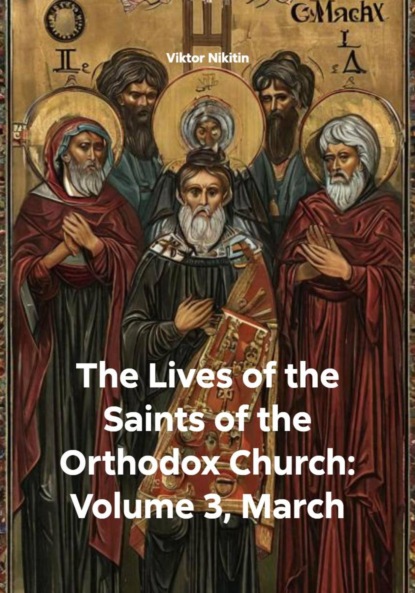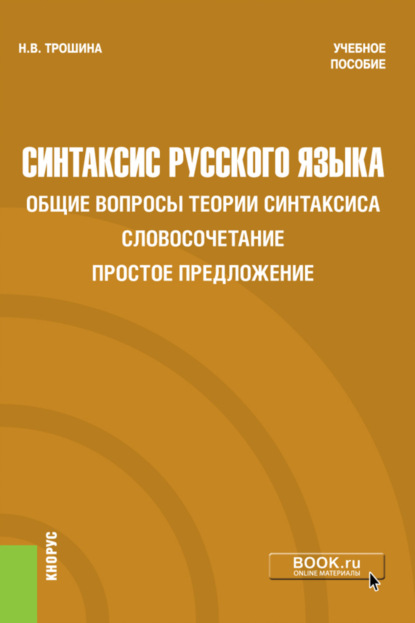The Lives of the Saints of the Orthodox Church: Volume 3, March

- -
- 100%
- +

Lives of the Saints Celebrated on February 29
Saint Leo of Cappadocia, Monastic:
Saint Leo lived in the region of Cappadocia, a historic center of Christian monasticism famed for producing numerous holy ascetics and theologians. Although details of his life are scarce, Leo is remembered as a devoted monk who embraced the rigorous ascetic lifestyle typical of Cappadocian monastics—marked by continuous prayer, fasting, and spiritual vigilance. Cappadocia, situated in what is now central Turkey, was home to many of the great Fathers of the Church (like Basil the Great and Gregory of Nyssa), and Leo’s holiness is seen as part of this rich spiritual heritage. He exemplifies the ideal of withdrawing from worldly distractions to cultivate communion with God through silence and prayer, influencing monastic practices for generations.
Saint Germanus of Dacia Pontica (Dobrogea, Romania) (c. 415):
Germanus served as bishop in Dacia Pontica, an area in the Roman province that roughly corresponds to modern Dobrogea in Romania, situated along the Black Sea coast. His episcopacy coincided with the decline of Roman authority and increasing incursions by various tribes. Despite political instability and the challenges of pastoral leadership on the empire’s frontier, Germanus is credited with steadfastly maintaining Orthodox Christian faith and discipline among his flock. He combated heresies prevalent at the time and strengthened the Church’s presence in a region where pagan beliefs and competing Christian sects vied for influence. Germanus is honored for his courage and unwavering pastoral dedication amid adversity.
Venerable John Cassian the Roman, Abbot of the Monastery of St. Victor, Marseille (435):
John Cassian (c. 360–435) stands as one of the pivotal figures in the transmission of Eastern monastic spirituality to the Western Church. Born in Scythia (modern-day Romania), he journeyed to Palestine and Egypt, where he studied with the Desert Fathers—monks who practiced severe asceticism in the deserts. Bringing this wisdom to the West, Cassian founded the Monastery of St. Victor in Marseille, France, one of the earliest Western monastic communities shaped by Eastern ideals. His two major works, The Institutes and The Conferences, meticulously describe the ascetic life, spiritual struggles, and virtues necessary for monastic growth. His teachings on humility, the eight principal vices, and prayer deeply influenced St. Benedict’s Rule and the development of Western monasticism. Cassian’s life is a bridge between East and West, highlighting the universality of Christian asceticism.
Venerable John, Called Barsanuphius, of Nitria in Egypt (5th Century):
John Barsanuphius was a revered hermit and spiritual advisor in the Egyptian desert region of Nitria, a famous monastic center alongside Scetis and Kellia. Renowned for his profound spiritual insight and gifts of clairvoyance, Barsanuphius corresponded extensively with monks and even bishops seeking his guidance on matters of prayer, repentance, humility, and spiritual warfare. His letters, collected and treasured in Orthodox tradition, offer practical and profound advice, emphasizing vigilance against passions and fostering a deep, personal communion with God. Barsanuphius’s life exemplifies the Desert Fathers’ ethos: asceticism as the path to inner freedom and divine union.
Saint George the Confessor, Bishop of Defeltos (7th Century):
George was the bishop of Defeltos (likely in Asia Minor or the Byzantine Empire) during the era of Byzantine Iconoclasm (8th century), though his death is sometimes placed earlier. As a confessor, George suffered persecution but not death, for upholding the veneration of icons against imperial iconoclast policies that sought to eliminate their use in worship. His resolute defense of Orthodox doctrine and practice, in the face of state-sanctioned opposition, made him a model of episcopal courage and faithfulness. His witness helped preserve the theological and liturgical traditions that define Eastern Orthodoxy.
Martyr Theocteristus, Abbot of Pelecete Monastery near Prusa (8th Century):
Theocteristus was abbot during one of the most turbulent periods for Byzantine monasticism, the Iconoclastic Controversy. Leading the Pelecete Monastery near Prusa (modern-day Bursa, Turkey), he upheld the Orthodox faith and the veneration of icons despite imperial persecution. Known for his spiritual leadership, asceticism, and teaching, Theocteristus was eventually martyred—likely executed for refusing to renounce icon veneration. His life embodies the monastic commitment to preserving true faith through prayer, suffering, and martyrdom.
Saint Oswald of Worcester, Archbishop of York (992):
Oswald (d. 992) was a key figure in the English Church’s 10th-century reform movement, which sought to revive monastic discipline and spiritual life following Viking invasions and political fragmentation. Initially Bishop of Worcester, he later became Archbishop of York. Oswald founded several monasteries, including Ramsey Abbey, and introduced the Rule of Saint Benedict to England. His reforms emphasized clerical celibacy, education, and liturgical renewal. Oswald was renowned for his personal holiness, administrative skill, and dedication to charity, earning him veneration as a saintly shepherd who helped shape the medieval English Church.
Venerable Cassian, Recluse and Faster of the Kiev Caves (12th Century):
Cassian was a monk and ascetic of the Kiev Pechersk Lavra, one of the most important spiritual centers in medieval Rus’. As a recluse (eremite), he lived in seclusion, devoting himself to rigorous fasting, prayer, and contemplation, embodying the hesychast ideal of inner stillness (hesychia). His spiritual discipline and humility inspired other monks and laity, contributing to the flourishing of Orthodox monasticism in Russia. Cassian’s life exemplifies the pursuit of holiness through solitude and ascetic struggle.
Saint Cassian of Mu Lake Hermitage, Disciple of St. Alexander of Svir (16th Century):
Cassian was a prominent disciple of St. Alexander of Svir, who founded the Mu Lake Hermitage in northern Russia. This hermitage became a vital center of Orthodox monasticism. Following his teacher’s example, Cassian embraced strict asceticism, rigorous prayer, and charitable works. His humility and obedience were hallmarks of his sanctity. Cassian’s legacy contributed to the spiritual renewal of Russian monasticism during a time when it faced both internal challenges and external pressures.
Saint Arsenius (Matseyevich), Archbishop of Rostov (1772):
Arsenius Matseyevich served as Archbishop of Rostov during a period marked by both ecclesiastical reform and growing secular influence within the Russian Empire. He was known for his pastoral zeal, defense of Orthodox traditions, and efforts to improve the moral and educational standards of the clergy. Arsenius worked to ensure that church governance remained faithful to canonical principles while addressing the spiritual needs of his flock. His episcopacy reflected the balance between tradition and the demands of an evolving church in the modernizing empire.
Saint Meletius, Archbishop of Kharkov and Akhtyr (1840) (see also February 12):
Saint Meletius was a prominent bishop who shepherded the faithful in the Kharkov and Akhtyr dioceses of Ukraine during the early 19th century. His tenure was characterized by energetic pastoral care, promotion of religious education, and encouragement of monastic renewal. He fostered the building of churches and schools, strengthened clerical discipline, and worked to deepen the spiritual life of both clergy and laity. His legacy is one of devotion to Orthodoxy amid the social and political transformations of his era.
* * *
Lives of the Saints Celebrated on March 1
Martyr Eudokia of Heliopolis (107):
Saint Eudokia, born in Samaria and settled in the pagan city of Heliopolis in Phoenicia, was renowned not only for her striking beauty but also for her considerable wealth and influence. Before her conversion, she lived in worldly luxury, admired by nobles, merchants, and local magistrates. Yet inwardly she felt unsatisfied, aware of the emptiness of her life. One night she heard the chanting of a nearby monk, Germanus, reciting the account of the Last Judgment. Deeply moved, she summoned him to explain the Christian faith. Germanus spoke to her about repentance, divine love, and the possibility of a transformed life in Christ.
Eudokia withdrew for a week of fasting and prayer, after which she was baptized by Bishop Theodotus. She distributed her riches to widows, orphans, and the sick, and then entered a monastery outside the city, astonishing the local population. Her disciplined ascetic life and rapid spiritual growth brought many visitors seeking counsel. But her conversion angered former admirers, who stirred local officials against her. During Trajan’s persecutions, she was arrested and interrogated. Eudokia confessed Christ boldly, refusing to return to her former life or sacrifice to idols. She was beheaded, becoming one of the great examples of sincere repentance and resolute faith.
Martyrs Nestorianus (Nestor), Tribimius, Marcellus, and Anthony, of Perge in Pamphylia, by the sword (249–251):
These four companions belonged to the Christian community in Perge, a city known for its temples and pagan festivals. When Decius issued his empire-wide order forcing all citizens to sacrifice, the four refused, declaring that they offered worship to God alone. They were beaten, stretched on racks, and burned with heated metal, yet they continued praying aloud, strengthening one another. Their steadfastness deeply affected Christians hiding in the region, who saw in them the certainty of divine help. At last they were condemned to execution by the sword. Their relics were kept in Perge for centuries, drawing pilgrims who sought courage in their witness.
Martyr Antonina of Nicaea in Bithynia, Abbess (ca. 286–305):
Saint Antonina, raised in a Christian family, chose the monastic life from youth and became abbess of a community of virgins. She was known for her instruction in purity, her care for abandoned children, and her generous hospitality. During the Diocletian persecutions, authorities demanded that she surrender her nuns; she refused, insisting that she would rather die than betray those entrusted to her. After severe tortures—including beating, branding, and being suspended by her arms—she was offered wealth and freedom if she renounced Christ. Instead she prayed for her persecutors. Finally she was burned alive, sealing her pastoral care with martyrdom.
Virgin-martyr Domnina of Syria (ca. 460):
Domnina was raised in a devout Christian household and dedicated herself to God from early childhood, practicing fasting and constant psalmody. When local pagan officials renewed harassment of Christians, she was targeted for her influence as an example of chastity. Refusing marriage, she declared that Christ was her only Bridegroom. She was scourged before a crowd and subjected to threats meant to break her resolve. Her composed endurance led several witnesses to convert. She was eventually executed, and her grave became a place where Christians sought comfort and healing.
Martyrs Antonius, Marcellus, Silvester, and Sophronius, in Palestine:
These four Palestinian Christians lived during a period when Roman officials frequently demanded public sacrifices to imperial idols. When they refused, they were imprisoned and tortured, yet they encouraged one another with psalms and prayers. Fellow believers visited secretly to receive their blessings. After prolonged suffering, they were executed—some by the sword, others possibly by burning—leaving behind a memory of fraternal unity and courage.
Martyrs Agapius, Nicephorus, and Charisius:
Although few details of their lives survive, tradition holds that these martyrs were likely young Christian men who did not renounce Christ during periods of imperial persecution. Their names have been preserved in the Church’s diptychs as examples of steadfastness among the countless anonymous faithful whose blood strengthened the early Church.
Saint Silvester:
Remembered through early local veneration, Saint Silvester lived as a solitary or monastic, devoting his days to humble labor, fasting, and unceasing prayer. His hidden life attracted disciples, who later recorded miracles associated with him—particularly healings of those who visited his cell. Even without extensive historical records, his memory endured as one of purity and silence before God.
Saint Synesius, Ascetic of Lysos, Cyprus:
Saint Synesius withdrew to the hills near Lysos, living in a simple hut where he practiced strict fasting, long vigils, and manual work. Shepherds and villagers sought his blessing, for he was known to reconcile families and heal those suffering from possession or despair. After his repose, many reported miracles at his tomb, and he became a beloved intercessor for the region.
260 Martyrs of Rome (ca. 269):
During one of the fierce persecutions of the late third century, a large number of Christians were arrested in Rome—clergy, widows, soldiers, catechumens, and even children. They were tortured in various ways: some beaten, some burned, others cast to wild beasts in the amphitheater. Their bodies were secretly collected by fellow believers and buried in the catacombs. Their collective witness reveals the strength of the Roman Church and remains a symbol of unity in suffering.
Martyrs Hermes, Adrian, and Companions in Numidia (ca. 290):
Under Maximian Herculeus, North African Christians endured relentless persecution. Hermes and Adrian, likely leaders in their local communities, were arrested with their companions. They were offered positions of honor if they renounced Christ, but they answered with Scripture and steadfast prayer. After long torture—including scourging and deprivation—they were executed. North African Christians honored them as defenders of the faith, invoking their courage in times of trial.
Martyr Luperculus (3rd century):
Tradition suggests that Luperculus may have been either a soldier converted to Christ or a prominent believer whose example drew others to the faith. He publicly confessed Christ despite threats, and he was executed—possibly by beheading. His name appears in early martyrologies, a sign of the impact of his witness.
Martyrs Leo, Donatus, Abundantius, Nicephorus, and nine others, in North Africa:
These thirteen martyrs suffered during one of the repeated waves of anti-Christian violence that afflicted the African Church. They were bound together in imprisonment, praying aloud and singing hymns until their final execution. Local Christians kept their memory as a model of collective endurance.
Saint Felix III, Pope of Rome (492):
Pope Felix III served during the Acacian Schism, a turbulent period marked by disputes over the nature of Christ and relations between East and West. Felix firmly defended orthodox teaching and resisted political pressure from the Eastern emperor to compromise. He also organized relief during famine, restored churches damaged by invasions, and strengthened the Roman clergy. His letters reveal pastoral warmth combined with theological clarity. He reposed peacefully and is honored as a guardian of unity and doctrine.
Saint Herculanus of Perugia (549):
Bishop Herculanus guided Perugia during the harsh Gothic Wars. When Totila seized the city, Herculanus interceded for the people, begging for mercy. Totila, angered by the bishop’s influence, ordered his death. According to tradition, Herculanus was beheaded and then cast from the city walls, yet his body remained incorrupt for many days, a sign of divine favor. His martyrdom became a symbol of episcopal protection and sacrificial leadership.
Saint Albinus of Angers (ca. 550):
Born to a noble family, Albinus entered monastic life at a young age. His humility and purity soon distinguished him, and he was chosen abbot and later bishop. He boldly confronted corrupt nobles who abducted women or violated marriage laws, earning their hostility. Yet the common people loved him for his charity. Many miracles are attributed to him, among them the raising of a dead man who testified truthfully in court. His tomb in Angers became a center of pilgrimage.
Saint David of Wales (ca. 589):
Saint David, known in Welsh as Dewi Sant, lived an intensely ascetic life. His monasteries were places of strict discipline: monks plowed fields by hand, ate only bread and vegetables, and drank only water. His preaching was gentle yet penetrating, calling the people to repentance and purity. Numerous miracles surrounded him, the most famous being the raising of the ground beneath him so the crowd could hear him speak. His final exhortation, “Be joyful, keep the faith, and do the little things,” remains central to Welsh spirituality.
Saint Marnock (ca. 625):
Born in Ireland, Saint Marnock traveled to Scotland as a missionary bishop. He lived among rural communities, teaching the Gospel, reconciling disputes, and healing the sick. Holy wells and churches dedicated to him testify to his widespread veneration. His pastoral gentleness made him beloved among the people of Annandale and surrounding regions.
Saint Suitbert (Swithbert), “Apostle of the Frisians” (713):
Suitbert, a monk from the English mission of Saint Willibrord, labored among the Frisian and Frankish tribes. He learned local dialects, established small mission stations, and baptized many converts. He founded a monastery on an island in the Rhine (now Kaiserswerth), where he spent his final years in prayer. His humility and persistence laid foundations for Christianity in the Low Countries.
Saint Siviard, Monk at Saint-Calais (729):
Raised within the monastic environment founded by his father, Saint-Calais, Siviard became abbot after a life steeped in Scripture and liturgical prayer. He wrote the life of Saint Calais, preserving valuable traditions about early French monasticism. Known for wisdom and gentleness, he guided his community with peace and stability.
Saint Monan, Archdeacon of Saint Andrew’s (874):
Saint Monan served the Church in eastern Scotland, possibly as a missionary companion of Saint Adrian. Tradition recounts that he lived an austere life and was eventually martyred during raids by pagan invaders. Churches dedicated to him across Fife and Angus reflect the deep respect he earned.
Venerable Luke of Sicily (Leo Luke), Abbot and Wonderworker of Mount Mula (ca. 915):
Born in Sicily during Arab invasions, Luke fled to Calabria, where he embraced monastic life. His holiness soon attracted disciples. He founded the monastery of Mount Mula, where he practiced deep hesychastic prayer. He was known for clairvoyance, predicting dangers and guiding both nobles and peasants. Many healings occurred through his prayers, and after his peaceful repose he became one of the most revered ascetics of southern Italy.
Martyrs Gervasius and Leo, brothers (ca. 900):
Gervasius and Leo were brothers who preached Christ in regions where pagan practices persisted. Leo became Bishop of Bayonne and labored especially among the Basques, earning the title “Apostle of the Basques.” Both faced hostility and were eventually killed for their missionary work. Their witness paved the way for the Christianization of southwestern France and northern Spain.
Saint Rudesind (Rosendo), Galician Bishop and Abbot (977):
Born into a noble Galician family, Rudesind became a monk, bishop, and abbot during a period of political instability, including Viking raids and internal conflicts. He defended monastic lands, protected the poor, and mediated disputes between warring nobles. His monastery at Celanova became a center of holiness and learning. Miracles occurred both during his life and after his repose, making him one of the great saints of medieval Spain.
Venerable Agapius of Vatopedi Monastery (13th century):
Agapius lived in profound humility at Vatopedi on Mount Athos. His obedience was said to be perfect; he accepted every task with silence and joy. Through long prayer and ascetic struggle, he attained deep spiritual insight. He comforted many monks and pilgrims, healing both physical and spiritual afflictions. His memory remains cherished among the Athonite fathers.
Venerable Martyrius, Abbot of Zelenetsk (1603):
Saint Martyrius founded the Zelenetsk Monastery in the remote forests near Pskov. He lived in a small cell, practicing strict fasting, labor, and the prayer of the heart. His monastery became a refuge for monks seeking solitude. After his repose, numerous miracles were reported at his relics, particularly healings and deliverance from despair.
New Martyr Parascevas of Trebizond (1659):
Living during Ottoman rule, Parascevas refused to abandon Christianity despite threats of violence and offers of promotion in exchange for conversion. After openly confessing Christ, he was tortured and executed. His steadfastness strengthened the Christians of the Black Sea region.
New Hieromartyr Methodius of Russia (1920):
Father Methodius served faithfully during the Bolshevik Revolution, secretly baptizing infants, giving communion, and comforting the persecuted. Arrested for “counter-revolutionary activity,” he was urged to renounce the Church. He refused and was executed, becoming one of the first priest-martyrs of the new regime.
New Martyr Antonina of Kizliar, Abbess (1924):
Mother Antonina clandestinely maintained monastic life after the Revolution, guiding her sisters in prayer, distributing food to the poor, and holding hidden services. She was arrested and executed for refusing to cease her ministry. The faithful remember her as a defender of monastic tradition under persecution.
New Martyr Anastasia Andreyevna, Fool-for-Christ:
Anastasia lived as a fool-for-Christ in the North Caucasus, feigning madness to speak truth without attracting official attention. She endured ridicule, poverty, and suspicion. Eventually she was arrested and killed for her faith, and the people revered her as a wonderworker who healed the afflicted and foretold dangers.
New Hieromartyr Olga (1937):
Little remains of Saint Olga’s earthly life, but records indicate that she refused to betray fellow believers during interrogation in the Great Terror. Her courage strengthened those imprisoned with her, and she met her death with prayer.
New Hieromartyr Peter (Liubimov), Protopresbyter (1938):
Father Peter ministered faithfully to his flock during the Stalinist purges. Arrested for “clerical agitation,” he endured interrogation without renouncing Christ. He was executed, leaving behind a legacy of pastoral courage and fidelity.
New Hieromartyrs Basil, John, Benjamin, Michael, Priests (1938):
These four priests served in different regions but faced similar charges: continuing liturgical services, baptizing children, and supporting parish communities. Arrested separately, each confessed Christ boldly. They were executed and later commemorated together as defenders of the persecuted Church.
New Hieromartyr Anthony (1938):
Saint Anthony lived a quiet priestly life, serving small rural communities. He was arrested during the purges and tortured, yet he refused to abandon his vocation or renounce Christ. He was executed for his faith.
Virgin-martyrs Anna, Daria, Eudokia, Alexandra (1938):
These four young women participated in clandestine Christian gatherings, smuggling prayer books and assisting priests. Arrested and pressured to inform on others, they remained silent except to confess Christ. They were executed, and their purity and courage became a source of inspiration for underground believers.
New Martyr Basil (1938):
A devout layman, Basil was arrested for defending clergy and openly professing his faith. He was executed, becoming one of the countless lay martyrs whose witness sustained the Church during the Soviet era.
Virgin-martyr Hope (Nadezhda) Abakumova (1938):
Hope Abakumova, a young believer known for her quiet piety, continued attending secret services despite great risk. She was arrested for her public confession of faith and executed. Her name, “Hope,” symbolizes the enduring spirit of the persecuted faithful.





